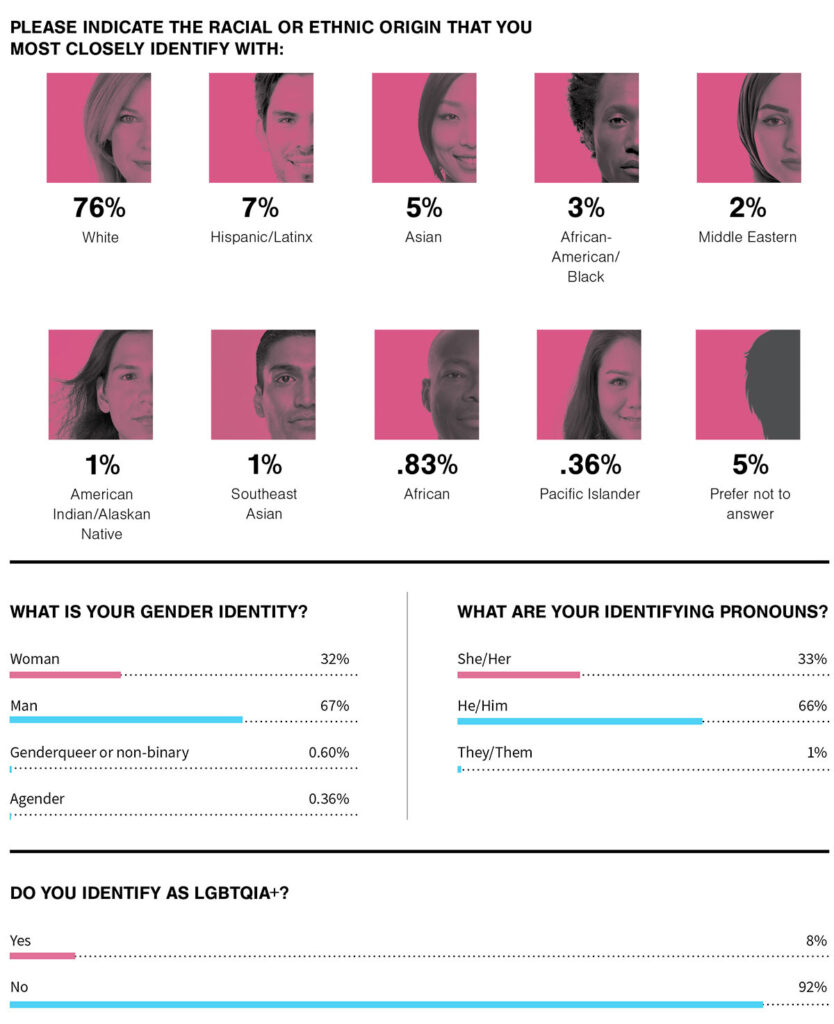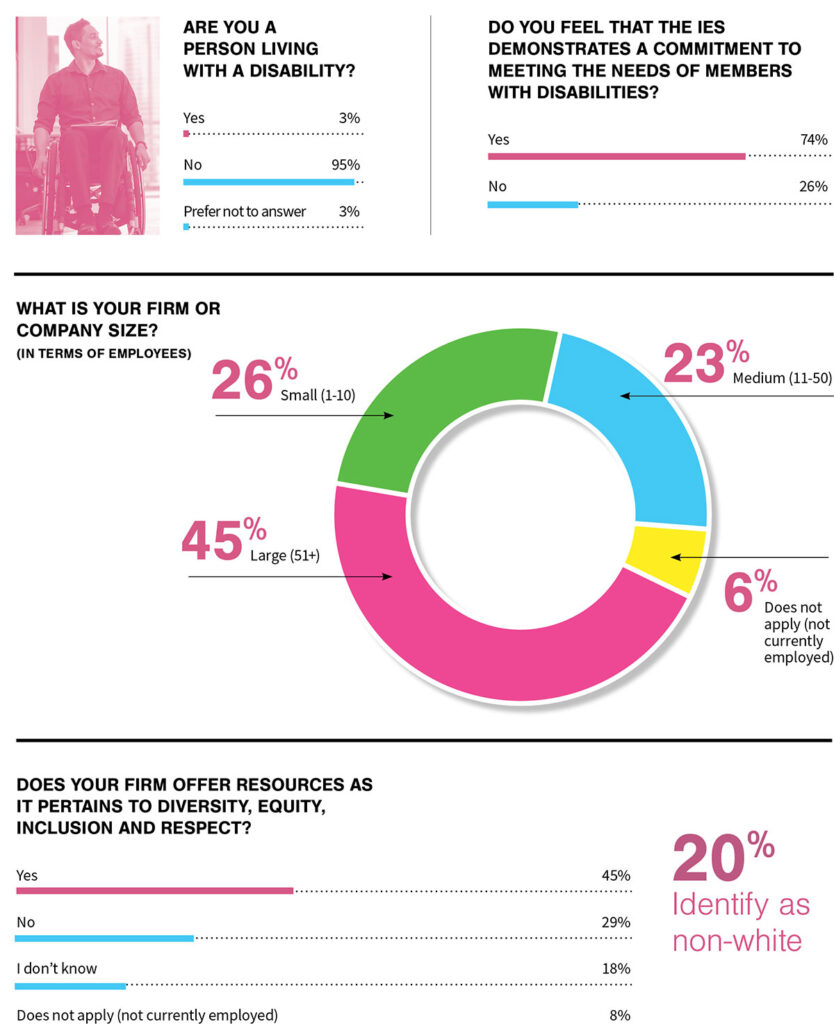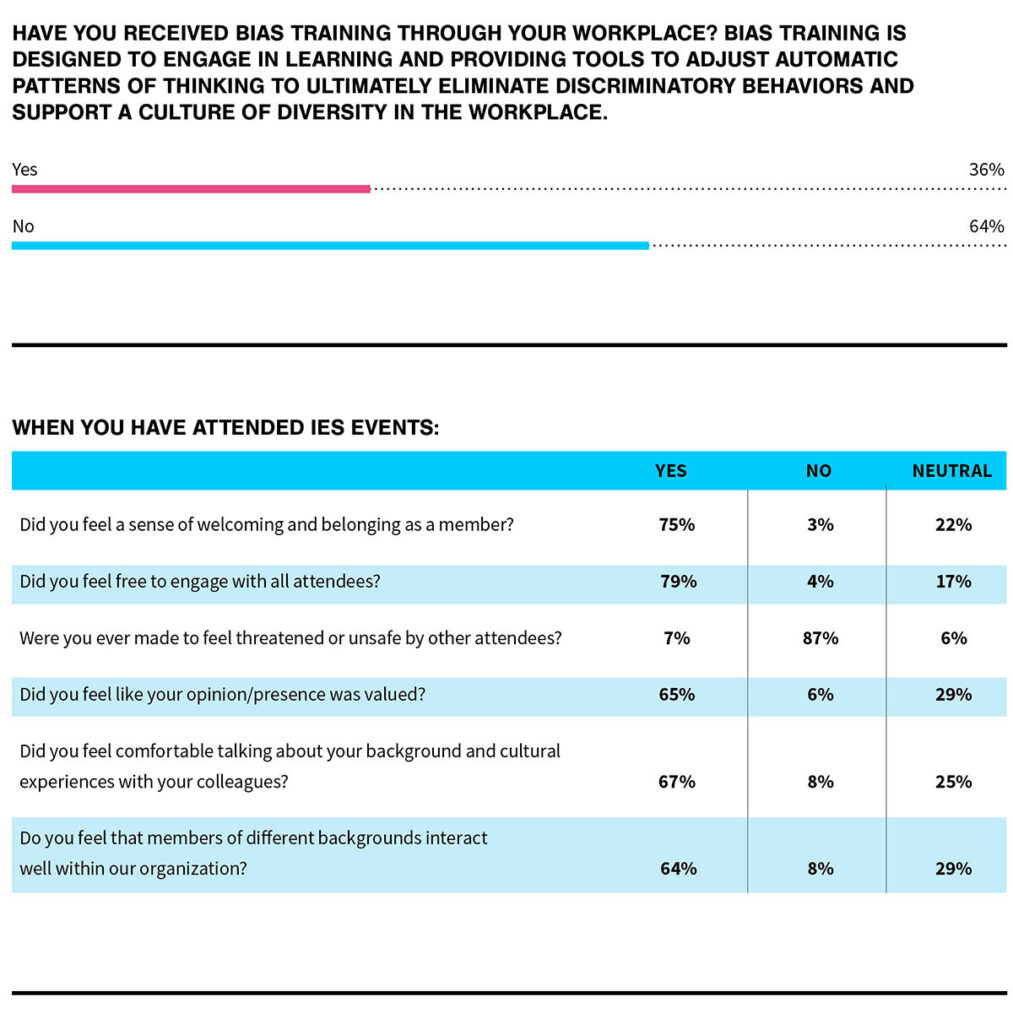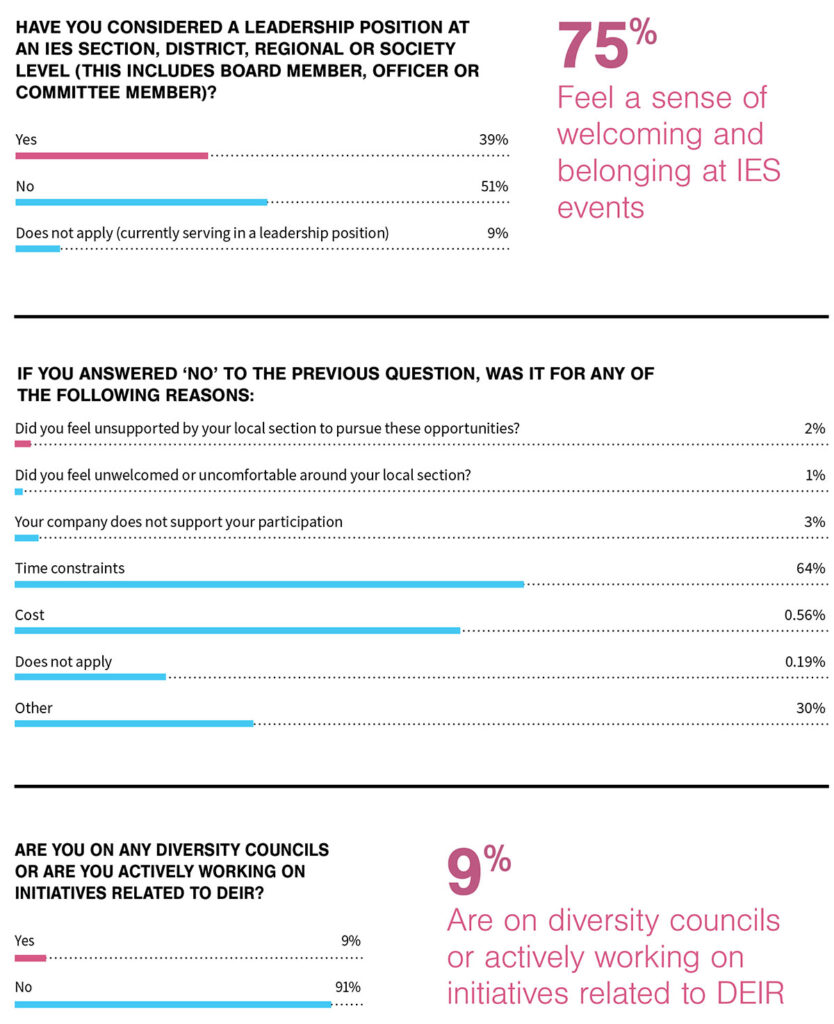A new IES committee conducted a first-of-its-kind member survey on topics related to diversity. An introduction from the committee on the purpose of this survey and a look inside the results
Recently, the newly formed Diversity, Equity, Inclusion and Respect (DEIR) Committee of the IES conducted a survey unlike any that the Society has done in the past. Whereas past surveys asked about technical trends, program inquiries and membership wants, this survey asked about who the membership is. What is our makeup in terms of culture, sex, race, professions and feelings toward IES programs? It was a more personal survey and quite a controversial one. We received slightly over 800 responses which aligns with 10% of the IES membership.
Allow us to back up a minute. The DEIR committee is a governance committee charged with looking reflectively at the IES as far as issues of diversity and inclusion are concerned. The committee does not represent a political statement by the Society, although it would be dishonest not to admit that recent societal issues, such as Black Lives Matter, George Floyd protests, and anti-Asian and Jewish sentiments had moved the need for this committee and its purpose more to the front burner.
At the onset of the committee, we decided that to accurately assess the Society’s needs and possible directions related to diversity issues, we needed to conduct a survey to determine the makeup of the IES membership. As this had never been done before, there was no data to use or even extrapolate from. We could make assumptions and guesses, but in the spirit of transparency and accuracy, we worked to create the survey that was released. We are not unique in this, and many of the questions and ideas came from other industry diversity surveys nationwide. The goal of the survey was to gather information that could be used to determine initiatives that the DEIR committee could focus on and policies/procedures that may need to be reviewed to ensure DEIR is considered.
We began to review and extrapolate the results this summer. Admittedly, there is still more analysis and review of the results to be done, and the committee will continue to do so. The 800-plus responses revealed a few trends. Some aligned with reasonable assumptions, others were more eye-opening and emphasized the need and purpose of this committee.
So, according to the survey, who is the “typical” majority member? The first and most obvious result was that the Society constitutes a dominantly Caucasian (white) and male membership. A few specific findings follow:
- More than 66% identify as white males.
- The second highest racial/ethnic makeup of the constituency was Hispanic at 7% and Asian at 5%.
- Less than 8% identify as LGBTQIA+.
- Slightly less than half (45%) work for companies that offer resources pertaining to DEIR.
Finally, we received 210 comments regarding the survey. The committee also received suggestions on how to improve the survey and language, which will be incorporated into future survey efforts. We received positive comments thanking the Society for undergoing a difficult yet needed initiative. We also received comments from some members who believe that the Society has been fine as is and should not be venturing into Society-issued political statements and actions (i.e., non-technical lighting related issues). Everyone, of course, is entitled to their opinions and we try to account for the well-being and value of all current and future membership.
So what’s next? At the recent IES Annual Conference, the committee shared updates on the committee efforts to the Emerging Professionals, Leadership Forum and at the closing of the IES conference. We intend to have a presence at LightFair to further discuss issues and ideas for future consideration. This committee will begin to finalize ideas and possible initiatives for the Board of Directors to consider and vote upon to put in play. While there has been concern by some members regarding the need and intent of this committee’s purpose, we must remember that as a lighting authority, it is our responsibility to shine light equally upon everyone, everywhere. When we allow the opportunity to add even more light and open the beam spread to shine that light into new areas, we don’t take any away from the those that already have light. We just make the illuminated space more inclusive. Don’t we design for uniformity values and average/minimum ratios? Would it not be hypocritical of us not to follow suit as human beings in this great Society? Let’s embrace the future, realize the greater possibilities and value to the Society, and shine our light with the widest possible beam.
To stay up to date on the DEIR Committee and its efforts, visit the IES DEIR Website.






